PÒTOPRENS!
To coincide with the release of the publication PÒTOPRENS: The Urban Artists of Port-au-Prince, which celebrates the titular 2018 Pioneer Works exhibition, Broadcast is publishing the volume’s introduction by one of its editors, writer and geographer Joshua Jelly-Schapiro.
Port-au-Prince! PÒTOPRENS. Hail it in the French of its founders, or in the Kreyòl it speaks: Haiti’s restive and storied capital, either way, is at once a place and an idea, a geography and a history, a past and a now. In this it’s not unique. But the lived particulars of this metropolis—the charcoal smoke in its air and the mud underfoot, the kompa beats to which its streets move and shake—have long been joined to superlatives, not all of them good, that stick to its name like ash. Because the capital of history’s first Black republic has also been a capital of other things. The capital, as its people have tired of hearing, of the Americas’ poorest country. The capital of a global djaspora, a diaspora, whose members have left to live in places whose names—Boston, Brooklyn—have been adopted by gangs that run its docks. The capital, too, of a culture of astonishing riches and depth, born of what’s still the only successful slave revolution this planet’s ever known.
Port-au-Prince! PÒTOPRENS. A city filling a bumpy bowl between its island’s high mountains and the Caribbean Sea. A city of cinderblocks and sequins. Of young men on motorbikes, proffering rides, and market women peddling cassava cake. Of trash-choked rivers and “gingerbread houses” from whose gables bougainvillea drips. Of steep roads where the hulking SUVs of aid workers and crooks shove past brightly painted tap-taps in this “city of fifteen hills,” as native son Dany Laferrière wrote, “with its ant-taxis climbing the heaven-seeking streets.” Its name puts one in mind of an anchorage perhaps named, in colonial days, for some young regent from Paris. But Port-au-Prince wasn’t an entrepôt where any royal set foot, in that era when France’s fortunes were made on the backs of its slaves.
In 1749, the prince for which this town by the Gulf of Gonâve was named wasn’t a man but a boat: Le Prince was a French vessel that had, a few decades before, nosed Hispaniola’s west coast. The big island’s eastern acreage had belonged, since Columbus’ day, to the Spanish. The French colony here, called Saint Domingue, was launched in the 1600s by buccaneers hunting gold. A century later, it took off thanks to the more lucrative product—sugar—that saw some ten million enslaved Africans brought to the New World between the fifteenth and nineteenth centuries from Kongo and Calabar and Dahomey. During a few brief and torrid decades in the late 1700s, fully one million of them were unloaded on Saint Domingue’s docks.
The sugar trade’s outsize scale here, and its violence, had the same source. Few of the enslaved, as every book on Haitian history can tell you, survived more than a few harvests. New ones were always needed. But these brutalities that gilded Paris also sowed seeds, as those books recall too, for the colony’s undoing. In 1791, Saint Domingue’s enslaved people launched an assault on its plantation masters that became a revolution. The “Black Jacobins'' of Toussaint Louverture asked their counterparts in France, during its own revolution, a question: How universal, really, are universal rights? They drove the blan from their land. In the constitution of 1804, their great general Jean Jacques Dessalines declared “a nation where no white man will…set foot as master.”
Such is the story of Haiti’s birth. Such are the first roots, too, of the impoverishment of a country long shunned by the world, whose old owners saddled it with unpayable debts. These facts from the past remain essential to Haiti now. They remain essential not merely because they’re known to every Haitian but because they shaped the birth of the Vodou lwa, or spirits, who still abide Haitian life. Those lwa convened here because those diverse people from Congo and Calabar and Dahomey, during their revolution, needed a shared language of spirit and rights. That language of spirit was allied to a spoken one—Kreyòl—that combined French verbiage and African syntax. Both helped turn them into a people whose name for their new nation—“Hayti” means “high land” in its natives’ Taíno tongue—they borrowed from Hispaniola’s indigenous.
These truths have long been essential to Haitian art. They certainly are to many of the arresting works in PÒTOPRENS, the first major survey of the “urban artists” of contemporary Haiti. This signals these artists’ membership in a deeper continuum of culture. But this landmark show also marks a departure. This departure is in keeping with our urban and urbanizing era in which more of earth’s inhabitants, for the first time, now live in cities than outside them. And it’s tied to the demographic trend, especially in the world’s poorer nations, that has seen the mass migration of people from farms and fields to city slums. In Haiti, as in other of those countries where this has been occurring, authentic culture has long been thought to dwell in the countryside: it’s the rural peyi that’s depicted in most Haitian art hanging in galleries there, and that’s circulated abroad. PÒTOPRENS, by contrast, says different.
Its artists’ work is drawn from their rural forebears’ ways but is born of their city’s detritus and treasure. And it insists that their culture’s thumping heart today, like a plurality of Haiti’s people, is urban.
***
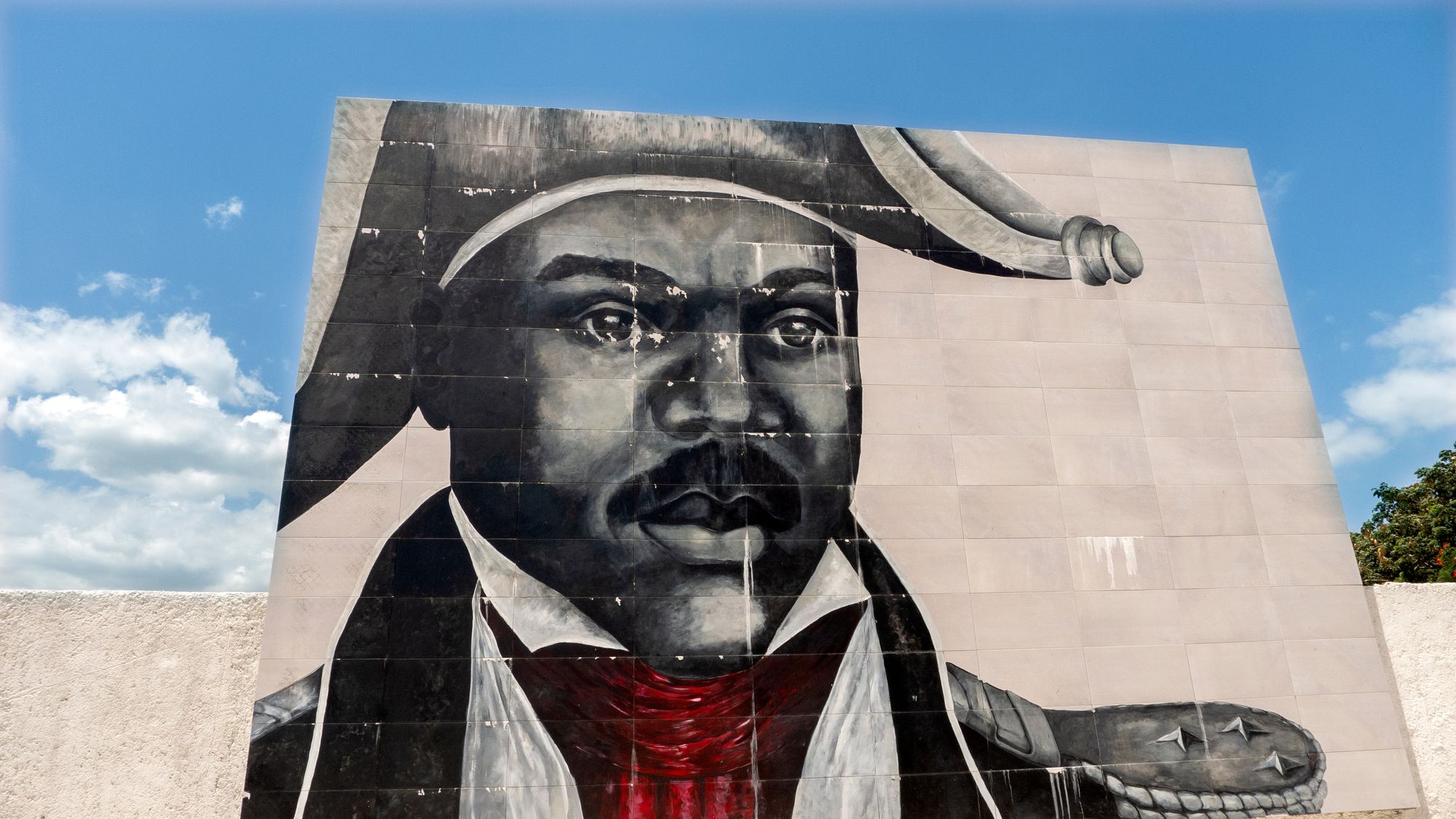
This assertion is not as simple, in the Haitian context, as it might be elsewhere. The Haitian anthropologist Michel-Rolph Trouillot, in his book State Against Nation, explained why. He did so, in part, by quoting Haiti’s first head of state: “With the first warning shot of the canon,” said Dessalines, “cities disappear and the nation stands in arms.” Haiti’s cities, during its revolution, were French-speaking places peopled by merchants and soldiers and a mixed-race class of freedmen and -women, called mulattoes, who were primed to become a new elite. Dessalines, after independence, believed the Haitian nation to be comprised of the Kreyòl-speaking peasants who built a “counter-plantation” society in the countryside, based in shared stewardship of land and communal living around yards called lakou. He tried to build a new capital among them, far from Port-au-Prince. But after Dessalines’ death, the nation’s main port became home to the Haitian state. And that state’s leaders have often been better, across the centuries since, at serving the capital’s elite than a rural nation whose neglect reached its nadir, between the 1950s and 1980s, under a notorious dictatorship. The Duvaliers, père and fils, turned their capital into a place for nothing so much as sucking the nation’s blood and cash into their own pockets before sending it on, from Port-au-Prince, to foreign bank accounts. The city, in Haitian history and life, is not be trusted.
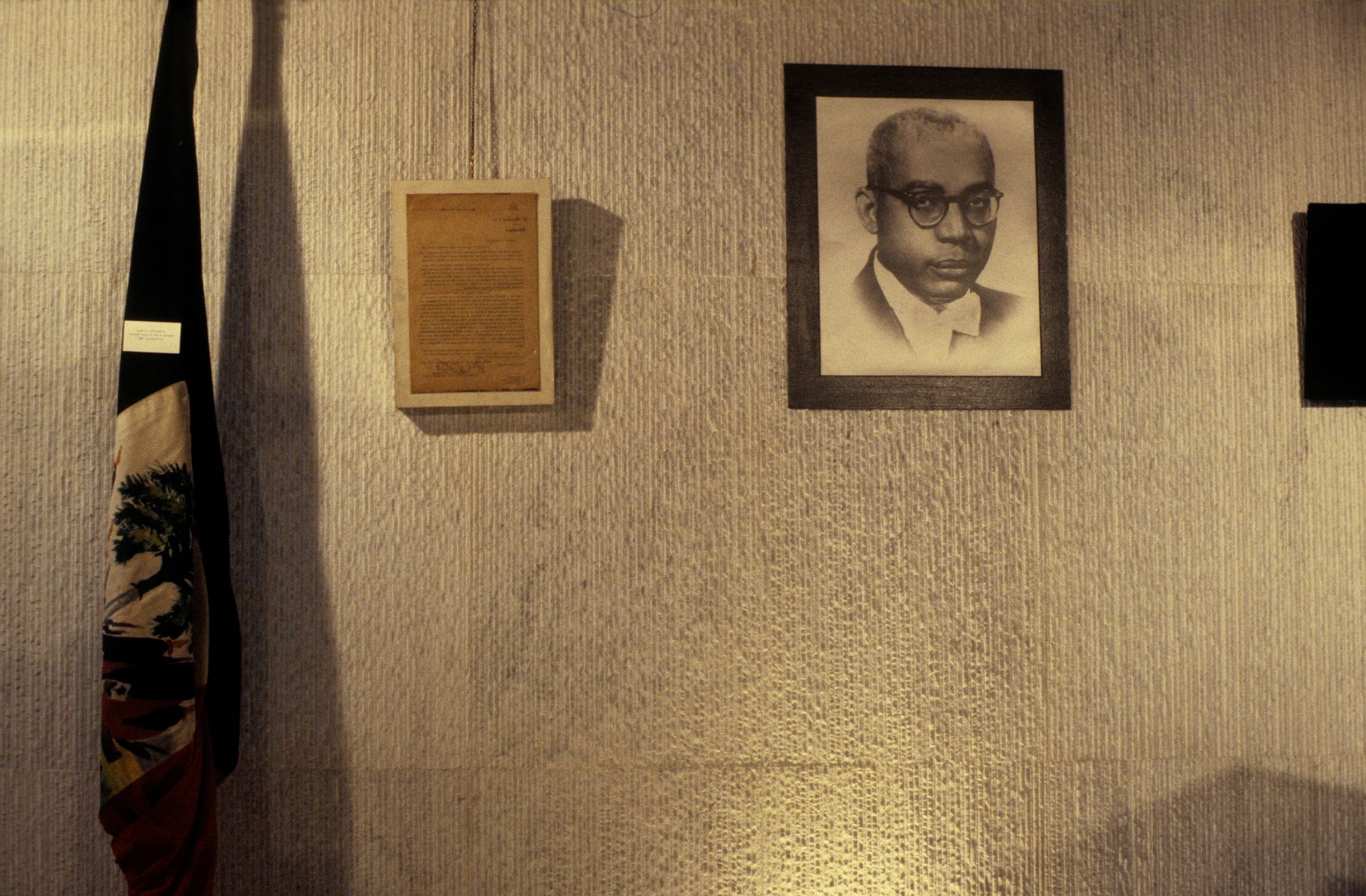
But this hasn’t prevented Haitians, in recent decades, from streaming towards it. They haven’t done so for the same reasons that people once left rural lives, in a bygone industrial age, for the factories of Detroit or Leeds: they’re not flocking to the city they call lavil to work good jobs, or even bad ones, making widgets. They’re doing so because their capacity to feed themselves from Haiti’s land, thanks to “free trade” and ruined soil, has been killed. They come to the city to survive by hanging on, as the Caribbean writer Patrick Chamoiseau wrote, to its “thousand survival cracks.” They settle in one or other of its estimated 350 cités, or shantytowns, whose shacks cling to steep slopes or are made from concrete sans rebar. Building codes aren’t even a rumor in these settlements now home to half the city’s populace. And their precarity and density comprise a big reason why, when on January 12, 2010, an earthquake measuring 7.0 on the Richter scale picked up Port-au-Prince and shook hard for thirty seconds, its force and after- shocks took the lives not of 2,000 or 20,000 people, but of a quarter million.
That afternoon’s trauma, and its memory, are now another layer in the urban palimpsest. But the city’s geography of power and class, in neighborhoods much older than its new cités in the hills, were changing well before 2010. Along what were once downtown’s main shopping strips, stores selling hardware or dresses were long ago abandoned by their owners who moved to suburban Pétion-Ville or abandoned the country, like many members of Haiti’s old bourgeoisie, for Montreal or Miami. With their old shops’ insides repurposed for housing or storage, commerce downtown has moved to their stoops: Madame Saras, the market women who make Haiti go, sell secondhand clothing or foods to the working poor who now inhabit the colonial grid. The trajectory of the city’s oldest blocks have lent new resonance to a warning issued by the Haitian architect and artist Albert Mangonès in the 1950s, about what would happen if Haiti’s state didn’t help shape its capital’s evolution. Mangonès, in a series of articles from decades ago that grew prominent in debates about how to rebuild Port-au-Prince after the 2010 earthquake, expressed his hope that the city “be a conscious and collective work of He also described it as “a symbol of the goals, desires, collective aspirations and unifying principles of a culture” which was “at the same time a true picture of its inconsistencies (and) ruptures.”
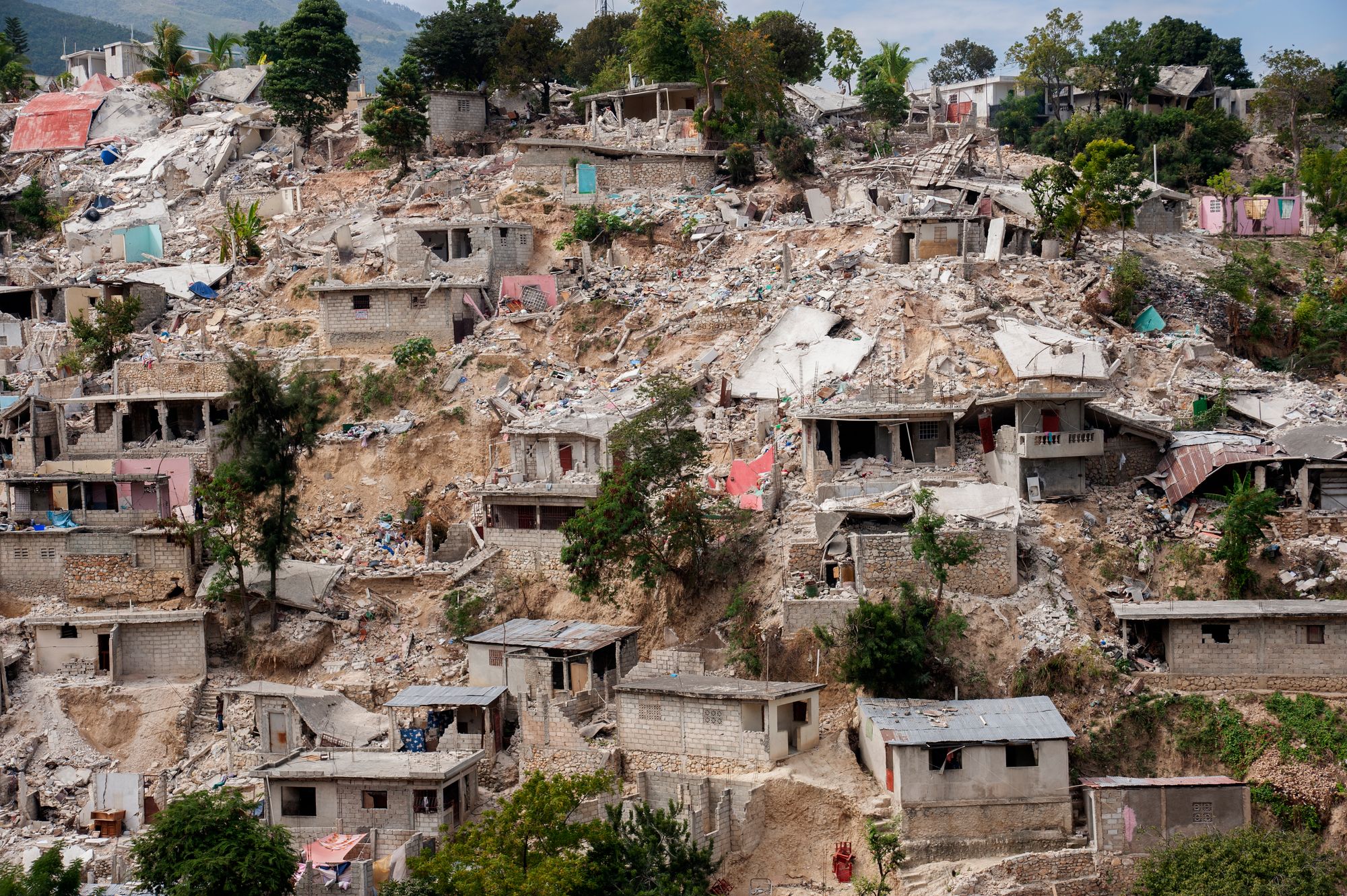
***
There were ruptures aplenty, in the pocked streets of downtown Port-au-Prince, when in 2014 I walked down Boulevard Jean-Jacques Dessalines, better known as the Grand Rue, to meet its inimitable artists. This was four years after the earthquake, but the city’s squares were still filled with people living in tents. In the Champ de Mars plaza, the displaced slept near Albert Mangonès famous sculpture of a runaway slave, Nèg Mawon, blowing his conch shell to freedom. The government was paralyzed. The tragic corruptions of an international aid effort that had raised billions of dollars but seen many of those dollars disappear, were beginning to come to light. There were also more hopeful symbols of rebuilding: the reconstituted Marché en Fer downtown, the Iron Market, had a new roof painted the same red hue of the cell phone company that paid for it. But nothing in Haiti’s capital then seemed to speak as potently to the city’s state, “its collective aspirations'' and its “inconsistencies and ruptures” alike, as what I saw near the Grand Rue’s southern end, in a zone long home to auto body shops.
Midway down a block still piled high with rubble, the outdoor atelier of André Eugène was unmistakable. Eugène’s distinctive sculpture—made with truck axles and manifolds and bones, and often invoking Vodou’s lords of the cemetery, Gede—has provided the guiding aesthetic, along with that of his old comrade Celeur’s, for the Sculptors of Grand Rue and Rue Magasin de l’Etat, a collective to which several artists featured in PÒTOPRENS belong. And their urban lakou, spilling onto adjoining lots and alleys, was full of arresting work. Every cranny was full of sculptures forged from the steel effluvia of our late capitalist world, or carved expertly from wood, or both. To glimpse these creations en masse, to encounter the sculptors of the Grand Rue for the first time, was to be bowled over by an aesthetic world whose forms were simultaneously on speaking terms with death and breathing with the vital materials of survival in today’s metropolis. It was also to be immediately convinced, as have been many participants in the Ghetto Biennale that Eugène and Leah Gordon founded here in 2009, of a truth only compounded by engaging with allied artists from other of the city’s “fifteen hills”—among them Bel Air, Rivière Froide, and Carrefour-Feuilles—that nurture modern makers. Here, it was clear, was a community of artists as dynamic and trenchant as now exists anywhere in the Americas, and idioms of artistic practice born of their immediate context but able to speak, by implication and with unsettling beauty, to larger global realities.
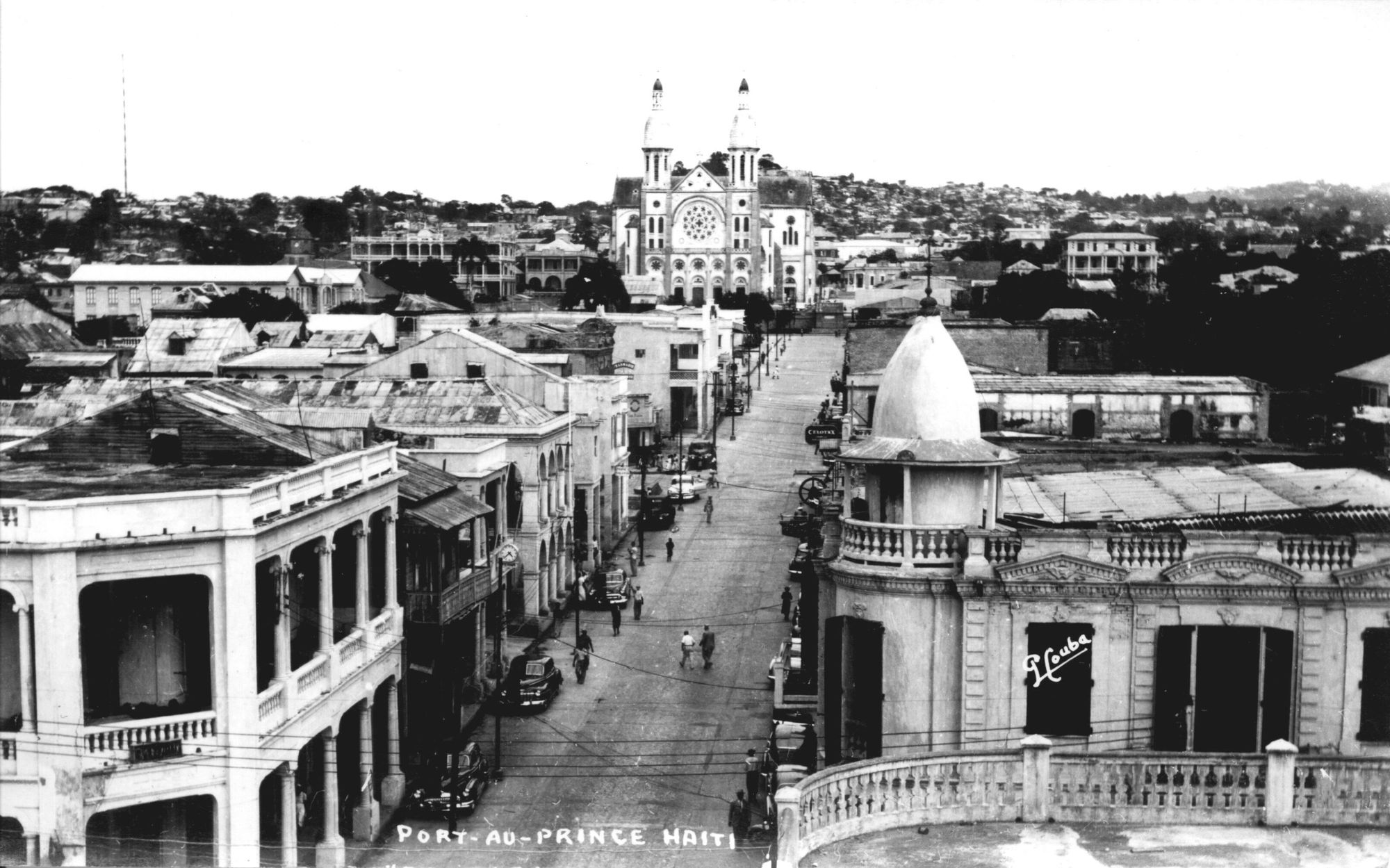
View of the Cathedral of Our Lady of the Assumption, Bel Air.
Courtesy of Collection CIDIHCA.
Grand Rue near Portail Léogane where the Sculptors of Grand Rue and Rue du Magasin de l’Etat have their studios.
Photo: Leah Gordon.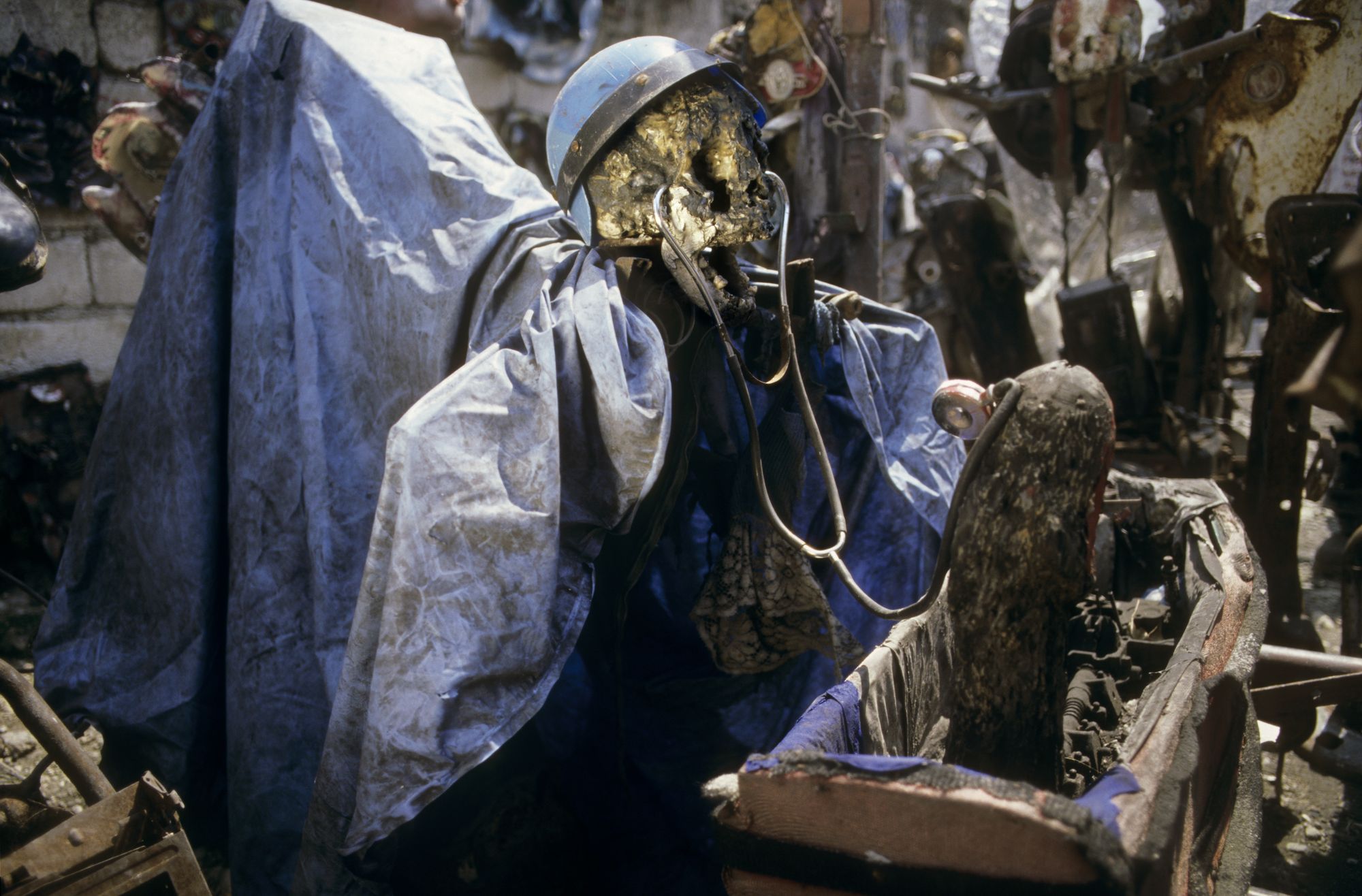
Dokto Zozo (Doctor Dick) in André Eugène’s yard, Grand Rue.
Photo: Leah Gordon.A few of Haiti’s leading urban artists, in recent years, have exhibited outside Haiti. But neither the world, nor New York, had seen anything like what landed on the concrete pier of Red Hook Terminal, Brooklyn, in September 2018: a forty-foot shipping container, packed to its gills by Port-au-Prince’s own docks, ready to disgorge the constituent pieces of an exhibition whose name—PÒTOPRENS—signaled its commitment to speaking the language its artists do (and to rendering all its textual materials, including this volume, in the modern orthography of a language that was, up until the mid-twentieth century, exclusively oral). The totemic figures of Eugène and Celeur and Evel Romain, alighting on another New World slave port, were brought to Pioneer Works. They were joined there to Ti Pelin’s giant stone heads, Lhérisson’s beaded skulls, the jeweled tapestries of Myrlande Constant. Together, they translated the lived geography of Port-au-Prince to the floor of an old iron works not far from where, on Brooklyn’s old industrial waterfront, raw sugarcane from the Antilles was once turned into powder.
To encounter these works here was different, of course, from meeting them in Port-au- Prince. There, part of their power came from the sense that they were built with matter from nearby blocks (and from the truth that it’s often hard, at least in Eugène’s teeming yard, to tell where one piece ends and the next begins, which are complete and which are still being born). They resounded differently, as art objects, against Pioneer Works’ brick and plaster walls. But they weren’t presented here in an “ethnographic” manner. Nor were they placed on pedestals or framed in glass, as they might be by a white-walled gallery invested in rendering them another kind of fetish. They were presented, in this contemporary space whose own industrial past is palpable, as the living creations and vital contemporary works they are.
Connecting dots at once freshly new and long overdue, PÒTOPRENS made those dots real for the thousands of people who came, that autumn, to engage the show’s works and commune, by the Salon Rogère barbershop outside, with urban Haiti now. Many of those who did so weren’t familiar with Haiti’s arts. Many more, as members of Haiti’s northern djaspora, had grown up amidst the ideas and forms placed in new light by lively “roundtables'' convened by the show’s special advisor Jean-Daniel Lafontant, and made to dance during performances by Haiti’s leading bands, RAM and Boukman Eksperyans. On the feast night of Gede, 1500 people convened for a Vodou-ceremony-cum-community happening that seemed to resonate for all present, in ways I’ve rarely if ever seen matched in New York, as at once au courant art event and vernacular rite and culture made flesh.
This book documents what PÒTOPRENS was, and is. It maps, with the help of the wisdom and words of the exhibition’s curators and of Professor Gina Athene Ulysse, some of this project’s currents and echoes. But above all it aims, through the work and voices of its artists, to hail their art and their city. PÒTOPRENS vivan. PÒTOPRENS lives. ♦
Subscribe to Broadcast